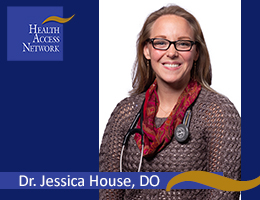During the COVID-19 pandemic, the terms “social or physical distancing,” “stay at home,” “shelter in place,” “quarantine,” and “isolation” have become buzzwords that are frequently used by the media to describe how we as Americans can stay safe and help others to remain safe. Unfortunately, those terms have caused some confusion. The terms aren’t interchangeable. Each of them are applied depending on your unique situation and risk factors. Here’s what they actually mean, from least to most restrictive:
Social or Physical Distancing
Social or physical distancing means deliberately creating 6-12 feet of physical space between yourself and others at all times, at home and outside home, to avoid spreading or catching COVID-19. Social/physical distancing is the first step in flattening the infection curve because the farther away you are from a source of infection, the less likely you are to get that infection and pass it on to others. It is as important as frequent handwashing for 40 seconds, not touching your face, covering your coughs/sneezes, disinfecting frequently used surfaces daily, and staying home when you are ill. For events and venues in which it is impossible to remain at least six feet apart from others, cancelling or postponing those events will protect public health. Please don’t underestimate the importance of social/physical distancing to keep yourself and those you love healthy. Use technology to stay active and touch base with friends and family.
Stay at Home Order
On 4/2/20, Governor Janet Mills issued a stay-at-home directive. This directive means we should be practicing social distancing 100% of the time, AND that people are to stay at home unless they MUST leave to go directly to/from an essential job or essential activity. A list of “essential jobs” can be found on Maine.gov (search the term “Essential Business Operations Definitions”). Essential activities include:
- Obtaining necessary food and supplies for household consumption, supplies for household safety/sanitation/maintenance, and supplies/equipment that are required to work from home;
- Obtaining medication/medical supplies and seeking medical/behavioral health/emergency medical care if it is absolutely necessary and cannot be safely postponed. Many offices are offering the safer alternative of telehealth/virtual visits. Please be open to these options during the pandemic;
- Providing urgent or truly necessary care for a family member/friend/pet/livestock or providing transportation of a family member/friend/pet/livestock directly to/from essential activities/jobs;
- Travelling directly to/from educational institutions to obtain food or instructional materials; and
- Engaging in outdoor activity IF it complies with social gathering (i.e., no group activities) and social distancing requirements.
- Shelter in Place
Shelter in place is a term that is usually reserved for the timeframe during or shortly after an emergency such as a mass shooting or a tornado. It means you should stay inside the building in which you are currently located until further notice. This term has been erroneously used interchangeably with “stay at home,” which adds to the confusion around its meaning. Maine currently has no areas recommending shelter in place.
Self-Isolation or Self-Quarantine
On 4/3/20, Governor Janet Mills issued a mandate for ALL travelers (Maine natives or non-natives) crossing the State border (by foot, bike, plane, train, automobile- you get the gist) to self-quarantine for 14 days after entering the State. People who test positive for COVID-19, people who have not been tested but who have symptoms of COVID-19, and people who are not wearing personal protective equipment and who have spent more than 20 minutes of close contact with a person who has COVID-19 should self-isolate/quarantine. Self-isolation or self-quarantine means that we should be eliminating all contact with others inside and outside of your home for 14 days. It means you should be staying in your own room, you should use a separate bathroom if possible, and you should not share any items with others (plates/towels/utensils etc.). You should not leave your home at all, except to get emergency/urgent medical care (in which case, you should call ahead first). Family and friends can drop food and supplies at your door but they may not enter your room/home where you are staying. After two weeks, if you don’t have symptoms, you can return to your normal routine — which may be simply a return to social distancing.
Please stay informed by listening to the Center for Disease Control updates on the National news; also listen to the local News stations for updates regarding the State of Maine specifically. Mainers are a tough bunch- we can get through this difficult time by working together with the shared goal of keeping us all safe and healthy, even if we are physically distanced from each other for now. Stay well until we can all be together again!
